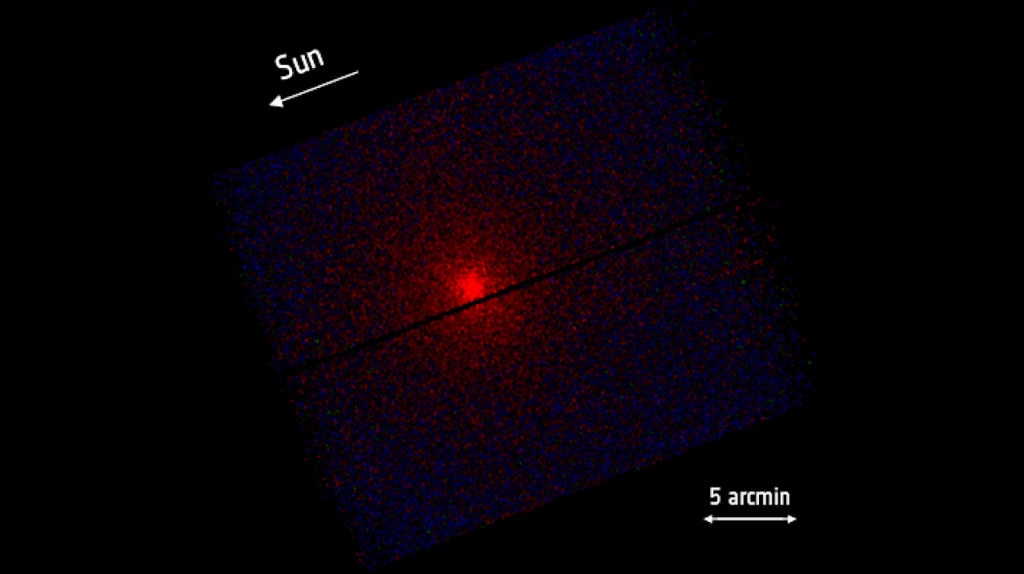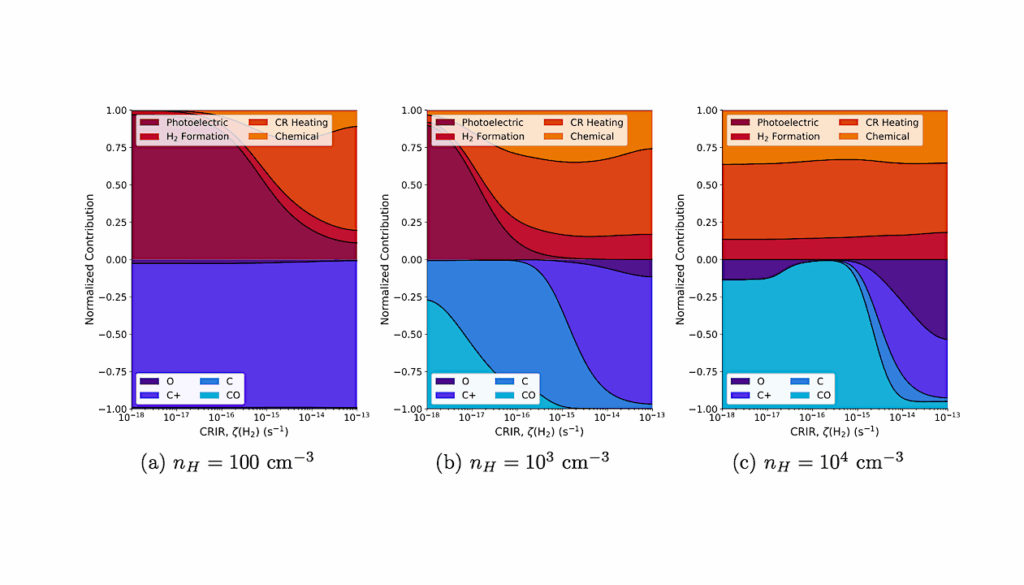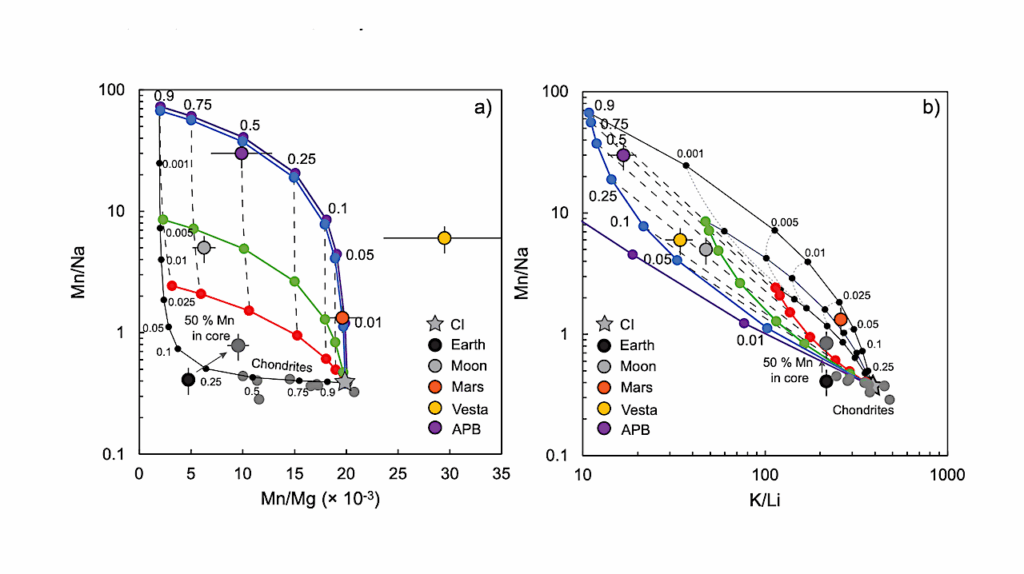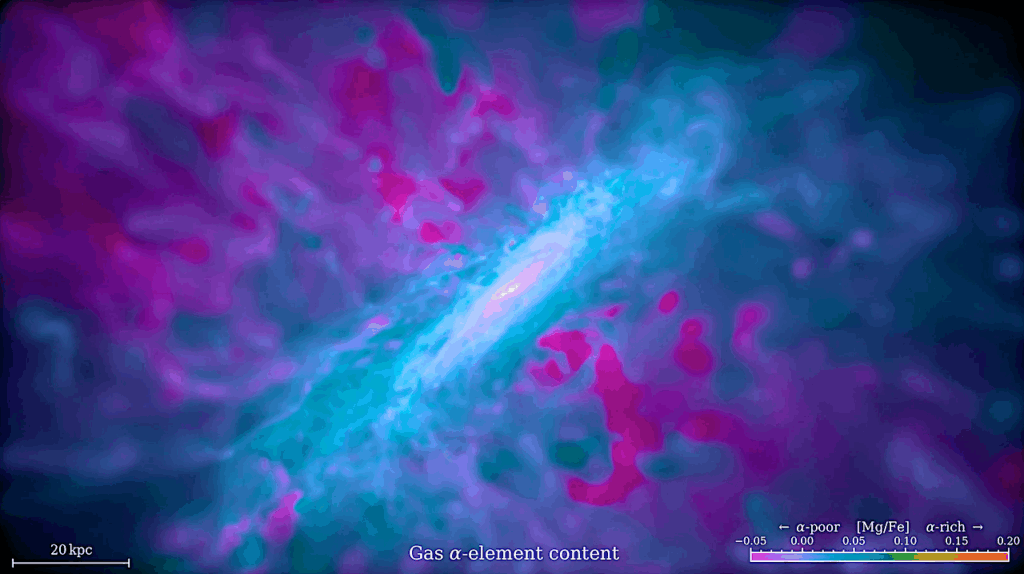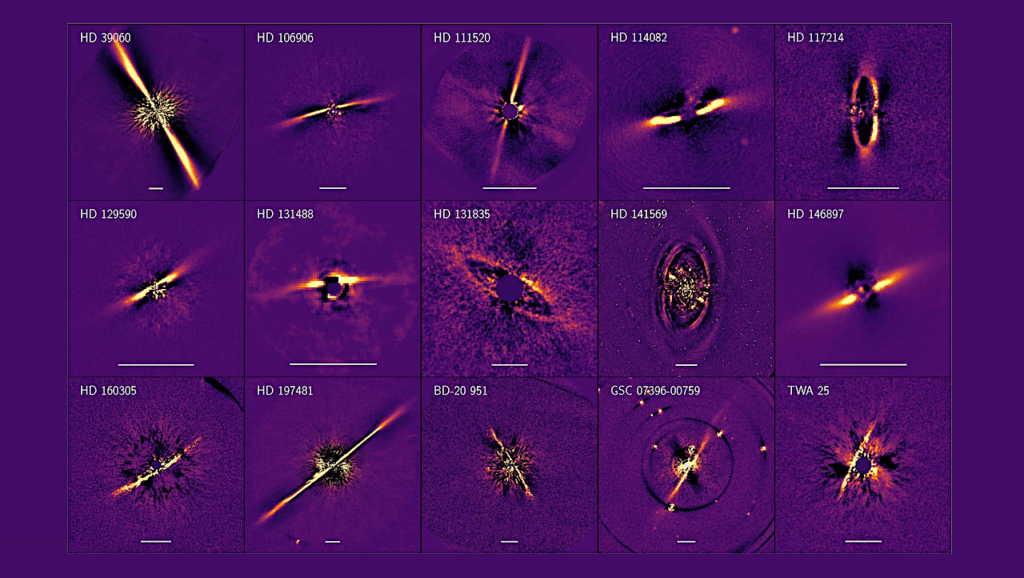The Missing Giant: Do FAST Spectroscopic Observations Reveal a Scarcity of Large Polycyclic Aromatic Hydrocarbons in Astronomical Environments?
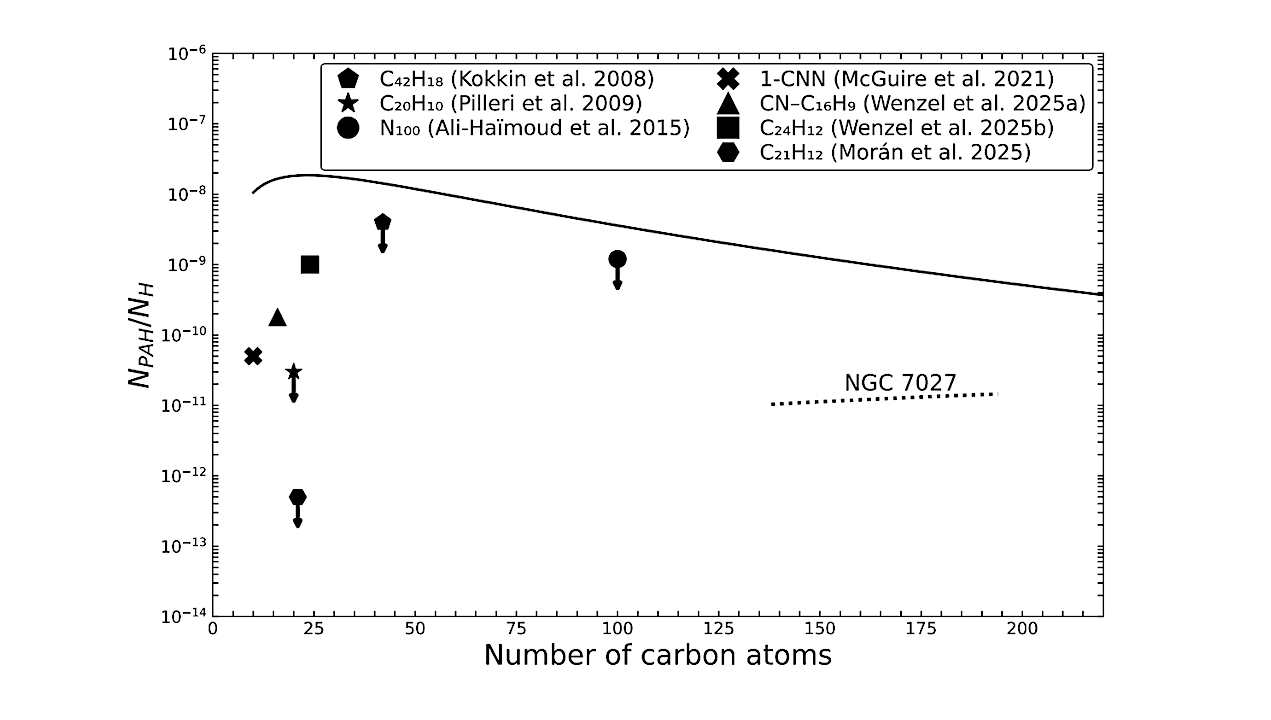
The search for large polycyclic aromatic hydrocarbons (PAHs) with over 100 carbon atoms is crucial to resolving the origin of unidentified infrared emission (UIE) bands.
These bands are commonly observed in nebulae and the interstellar medium, yet their spectroscopic assignment has remained unknown for decades. Using the Five-hundred-meter Aperture Spherical Radio Telescope (FAST), the world’s most sensitive instrument operating in the decimeter-wavelength range, we conducted a search for rotational transitions of large, quasi-symmetric PAHs.
Our sample included two prototypical UIE sources, NGC 7027 and TMC-1, along with a non-UIE source, IRC+10216, for comparison. A matched filter technique was employed to isolate comb-like spectral features from quasi-symmetric PAHs containing 138 to 194 carbon atoms in the FAST spectra.
This method significantly enhanced detection sensitivity to these astrophysically critical molecular signatures. Although no such features were detected, we derived upper limits on the abundance of large PAHs based on simplifying assumptions.
These upper limits are lower than the values predicted by theoretical models, which might tentatively suggest that large PAHs may not be the primary carriers of UIE bands. However, this conclusion should be treated as tentative, given that it rests on simplistic assumptions which have not been empirically validated.
Yi Shao, Yong Zhang, Xu-Jia Ouyang, Chuan-Peng Zhang
Comments: 7 pages, 4 figures. Accepted for publication in MNRAS
Subjects: Astrophysics of Galaxies (astro-ph.GA); Solar and Stellar Astrophysics (astro-ph.SR)
Cite as: arXiv:2508.15302 [astro-ph.GA] (or arXiv:2508.15302v1 [astro-ph.GA] for this version)
https://doi.org/10.48550/arXiv.2508.15302
Focus to learn more
Submission history
From: Yong Zhang
[v1] Thu, 21 Aug 2025 06:47:39 UTC (1,542 KB)
https://arxiv.org/abs/2508.15302
Astrobiology, Astrochemistry,


